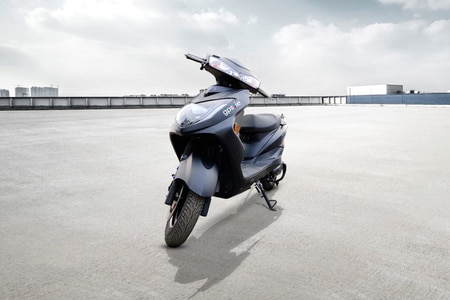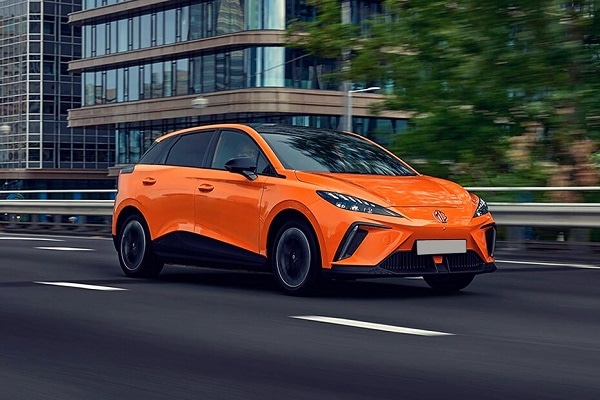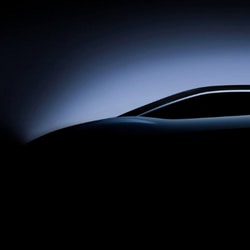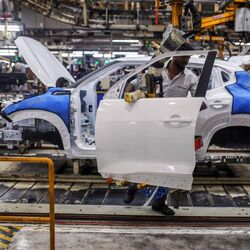Lithium is in short supply — but probably not for long
_1640931099422_1643211741556.jpeg)
_1640931099422_1643211741556.jpeg)
A cautionary saying in oil circles about the possibility of peak demand holds that “the stone age didn’t end for a lack of stones." When it comes to electric vehicles, there is more concern now that the electric age will fizzle for a lack of lithium.
Lithium-ion batteries power smartphones, laptops — and electric vehicles. When I wrote this back in 2016, analysts at Citigroup were speculating about the transformational effect on lithium demand if, in 2020, battery-EV sales were to hit 1 million. As it turned out, more than 2 million were sold that year — and almost 5 million in 2021, not including plug-in hybrids.
Also check these Vehicles
Also Read : Tesla’s Model 3 tops Europe EV sales ranking as VW’s Golf slows
There was more than enough lithium to meet that extra demand — so much so that prices began sliding in 2018 and didn’t bottom out until 2020. But since then prices have surged. Battery-grade lithium carbonate in China hit more than $40,000 per ton in recent spot trades, according to Benchmark Mineral Intelligence, a London-based data and market-intelligence provider, up from less than $6,000 18 months ago. Even if prices paid under long-term contracts haven’t risen as fast, it’s clear the market has tightened drastically.
Political risk also appears to be rising. Serbia just blocked Rio Tinto Plc’s plans to develop what would have been Europe’s largest lithium mine, following widespread protests. In Chile, the world’s second-largest supplier, the election of a young, left-wing — and, it seems, Swiftie — president, who has called for the creation of a national lithium mining company, has raised concerns about future projects there.
Predictions of a looming shortage in lithium have been heard for years, but they’re now becoming consensus. There’s some irony in the way that fans of oil and boosters of its apparent nemesis lithium both warn that a dearth of investment will fuel shortages and painful price spikes. It’s important to remember that the dynamics here are familiar, even though the context of the energy transition is new.
“It’s kind of a ‘duh’ moment," says Emily Hersh, a lithium expert who is now the chief executive officer of the exploration and development company Luna Lithium Ltd., referring to longstanding expectations of a shortage. But, she adds, “lithium is cyclical like any other commodity."
There is no actual shortage of lithium resources per se; it’s all a question of economic and political support for development. I remember the nervous mood at a lithium conference back in 2018, when some predicted that South American producers would quickly tap their reserves and swamp the market. This cycle of hope and despair is familiar to anyone who has watched, say, the oil market over decades — and it is indeed a vital, if sometimes destabilizing, driver of investment. The recent rally and creeping panic about shortages is needed to spark activity and ward off those shortages.
Similarly, while political risk may be rising, the issue is too complex to describe by saying, for example, that a left-wing government in Santiago portends doom. In Chile’s case, the long lead times needed for project development and the licenses already held by incumbent operators suggest that even an energetic new president would need time to have a big effect on supply. Hersh, who lived in South America for years, also cautions against reading too much into what Chile’s politicians say. While that country is vital to lithium supply, lithium is only a tiny fraction of Chile’s economy — unlike copper, for example — and that makes lithium an easy political talking point as the debate over a new constitution heats up.
Serbia’s sudden move against Rio, meanwhile, should be viewed in the context of upcoming elections there. As frackers discovered in the U.S., commodity producers must protect their social license to operate if they’re to avoid a backlash. Lithium may be vital in terms of tackling climate change; but that doesn’t give the industry a free pass to disregard problems associated with brine-water management and the usual concerns with mining.
Above all, political risk is embedded in energy of all types. Have you heard anything lately about Ukraine and Russia and Europe’s gas flows? Or about the Middle East? Decades, and trillions of dollars, have been spent building and defending supply chains for oil. Lithium and other critical minerals will require their own security arrangements. It’s a problem that needs to be addressed, yes, but it’s not exactly a novel one.
One structural problem that the EV boom faces sets it in contrast to traditional vehicles. When automobiles became popular a century ago, the oil industry supplying them was already quite well-developed; Standard Oil was broken up in 1911. Crucially, oil producers were looking for a new outlet as the electric light killed demand for kerosene lamps. So the marriage of the automobile with gasoline occurred at a time when there was already a surfeit of fuel (and fixed capital) looking for a market.
A hundred years on, the marriage of the automobile with lithium involves the simultaneous development of both EVs and the supply chain of minerals for their batteries. In addition, Morgan Bazilian, director of the Payne Institute at the Colorado School of Mines, points out that pricing for lithium remains largely opaque (as it does for the carbon emissions that EVs are supposed to address). That exacerbates an already enormous challenge: turning over the world’s fleet of more than a billion vehicles to electric models. Benchmark Minerals estimates that meeting the targets set at last year’s COP 26 climate conference would require 17 times more lithium than was produced in 2021.
Let no one doubt, therefore, that over the next few decades we are going to need a lot more lithium. The inherent bullishness of that situation is reason enough to think that suppliers and governments will find a way to tap it.
This column does not necessarily reflect the opinion of the editorial board or Bloomberg LP and its owners.
Liam Denning is a Bloomberg Opinion columnist covering energy, mining and commodities. He previously was editor of the Wall Street Journal's Heard on the Street column and wrote for the Financial Times' Lex column. He was also an investment banker.








 11.6 kwh
11.6 kwh 344 km
344 km













